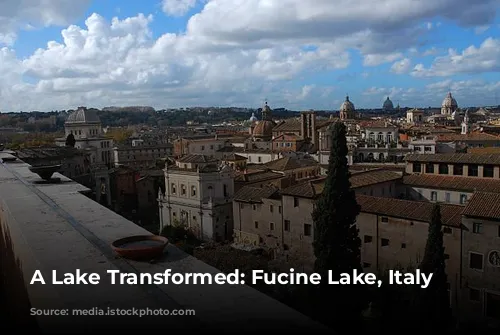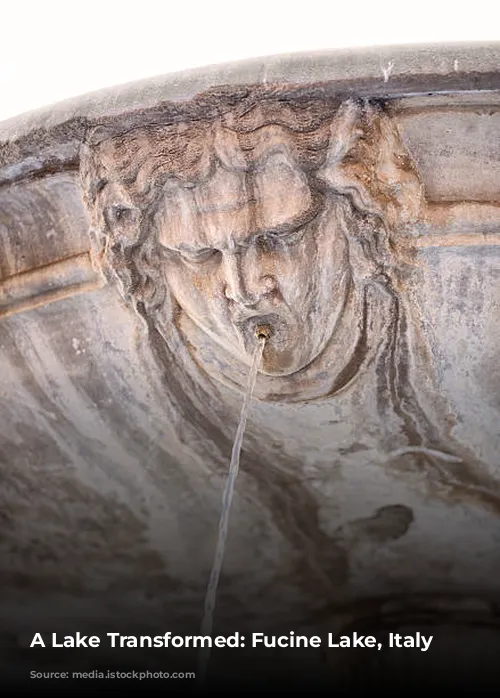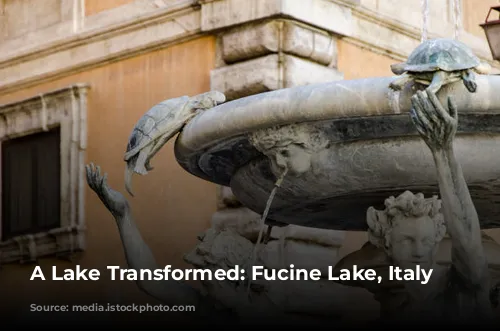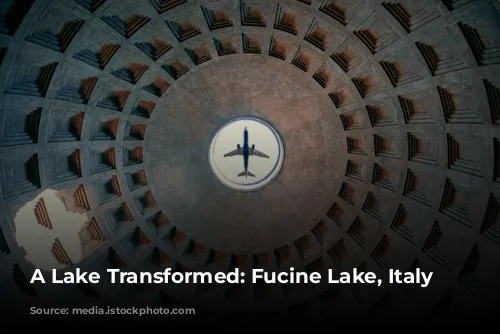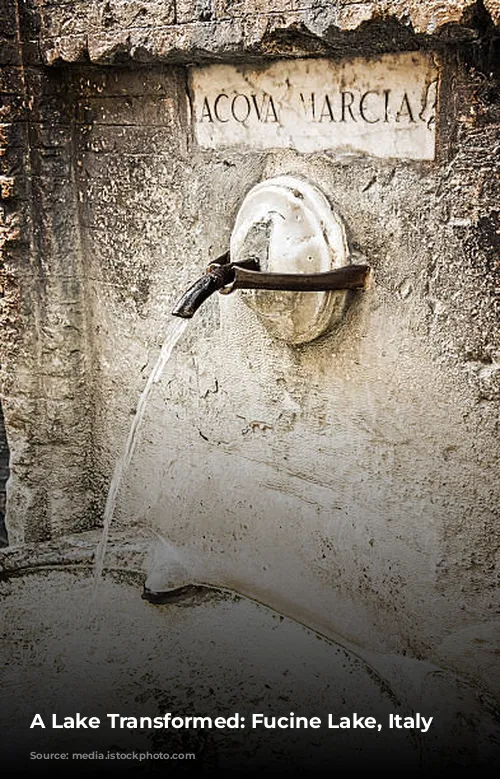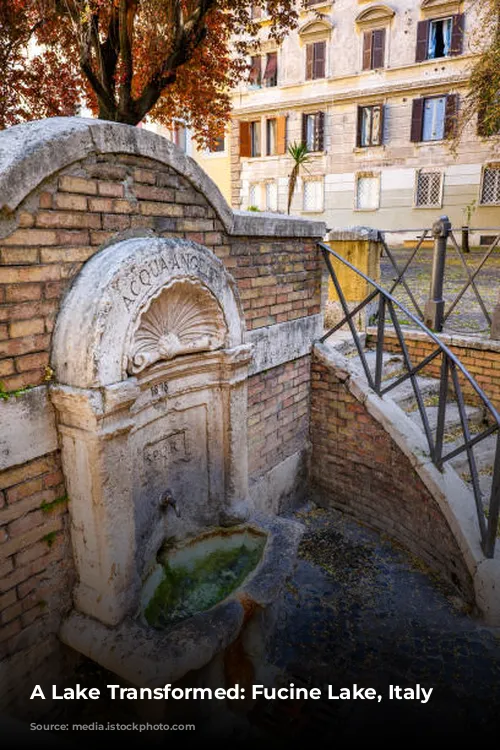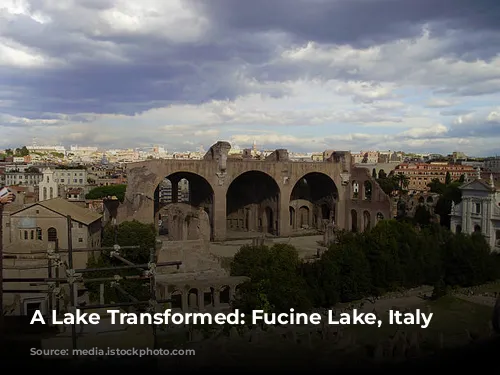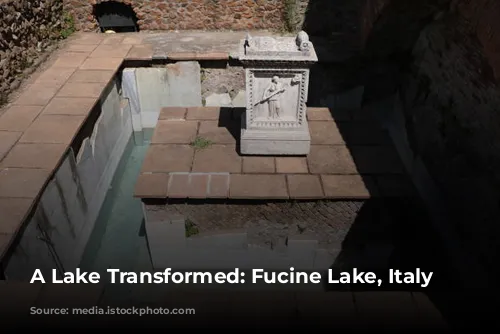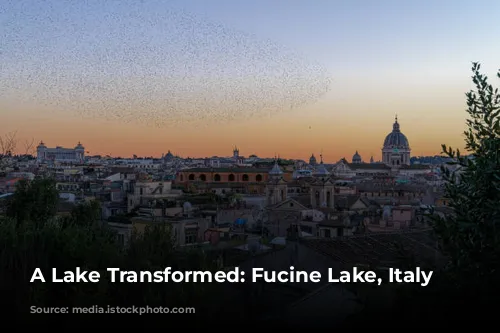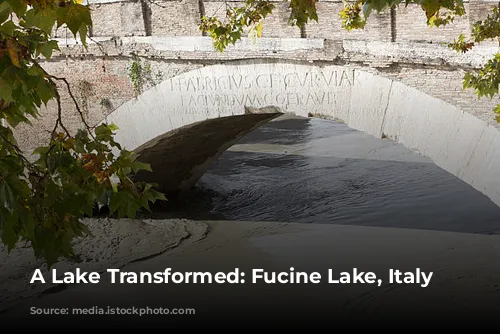This is a tale of a lake that once existed but no longer does, its story etched into the landscape of central Italy. We journey back in time to a period when the Fucine Lake, a shimmering expanse of water, graced the region, before the hand of man altered its destiny.
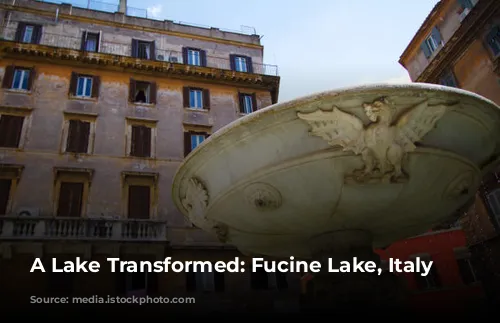
From Lake to Farmland
The image showcases a striking transformation: the remnants of the former lake now appear as a vast, light tan oval, its surface dotted with rectangular fields. This once-watery domain, now drained and dry, has been reborn as one of Italy’s most fertile agricultural zones. The name “Fucine Lake” persists, a testament to its watery past, even though the lake has been absent for nearly 150 years.
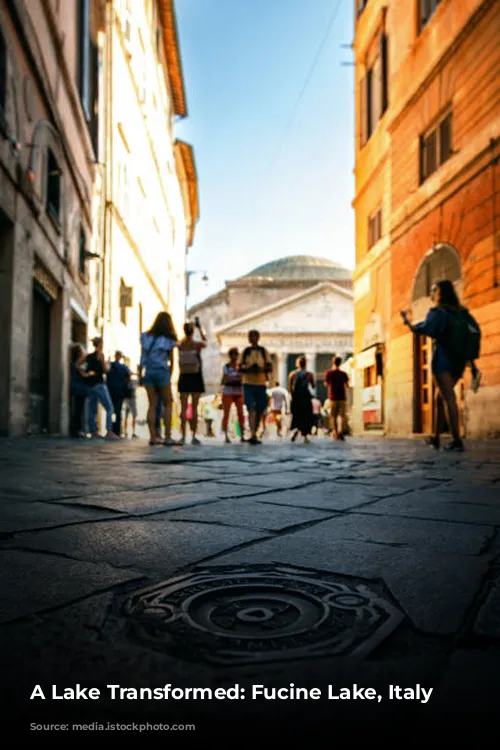
A View from Space
The perspective from above, provided by an astronaut photograph, offers a unique vantage point. The town of Avezzano, located near the drainage outlet of the basin, sits nestled just to the right of the former lake, about 80 kilometers east of Rome. A “circumference road” encircles the dry lakebed, marking the boundary between the green, vegetated fields surrounding the basin and the tan, fallow fields within. A dusting of snow along mountain ridges to the south adds a touch of winter magic to this scene.
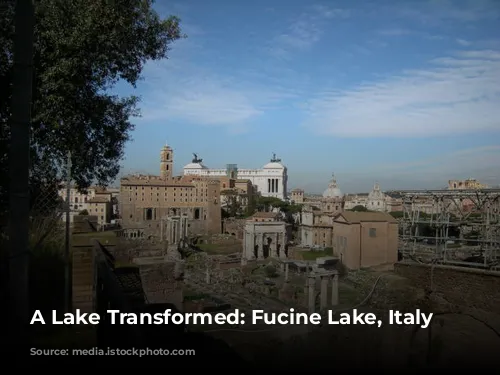
The History of Fucine Lake
Fucine Lake possessed a unique characteristic: it lacked a natural outlet. This meant its water level fluctuated wildly, responding to the whims of rainfall, often leading to devastating floods for the fishing communities living along its shores. The Romans, ever-practical, devised a solution to tame this unruly body of water. Emperor Claudius, known for his ambitious building projects, initiated the excavation of a tunnel through the surrounding hills. This monumental task, completed in 10 years by an army of 30,000 workers, resulted in a tunnel spanning 5.6 kilometers. The lake’s surface area shrank dramatically, from an initial 140 square kilometers to a mere 57 square kilometers. This ingenious feat of Roman engineering not only alleviated flooding but also helped control malaria, a scourge of the ancient world.
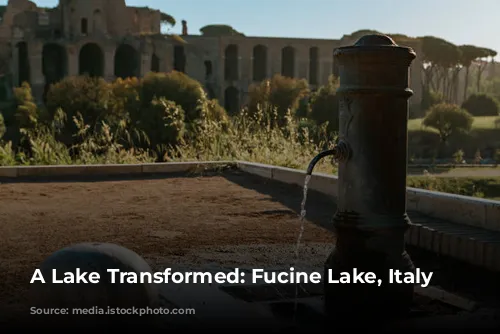
A Cycle of Change
The Romans’ legacy, however, proved fragile. After the fall of the Roman Empire, the tunnel was neglected, choked by vegetation and sediment. An earthquake, perhaps the same one that damaged the Coliseum in the 6th century CE, further hampered drainage by lowering the lake floor by 30-35 centimeters. The lake gradually re-emerged, its basin filling with water over the next millennium.
In the 19th century, a new era dawned. Prince Alessandro Torlonia took on the challenge of permanently draining Fucine Lake. His ambitious project, launched in 1862, ultimately succeeded, leaving the lakebed bare and ready for new beginnings.
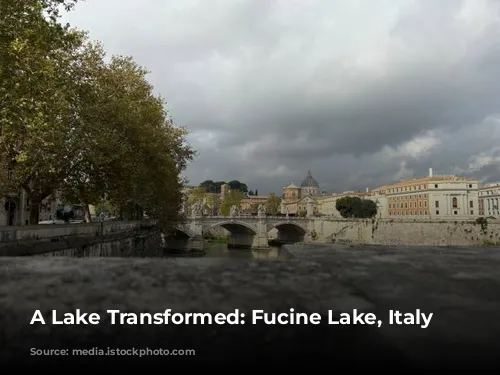
The Legacy of Fucine Lake
Fucine Lake, though no longer a shimmering body of water, remains a powerful reminder of the impact of human ingenuity and the ever-changing face of nature. The region, once prone to flooding, now thrives with agricultural bounty, a testament to the enduring legacy of a remarkable engineering feat. The story of Fucine Lake is a journey through time, a testament to the resilience of nature, and a tribute to the enduring spirit of human endeavor.
